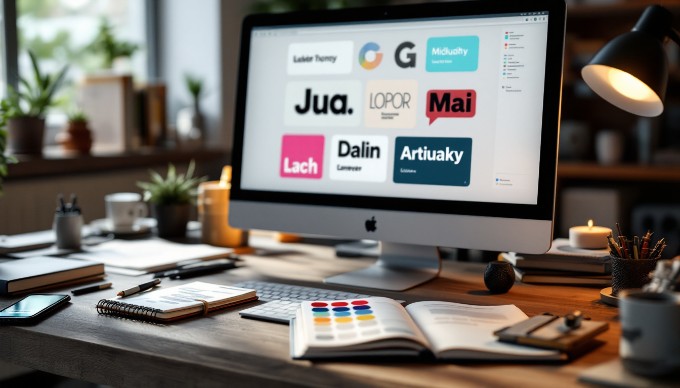Understanding design and ui for better user experiences
Introduction to design and ui
In the ever-evolving world of digital products, "design and UI" are crucial in shaping user experiences and driving engagement. Design involves the creative process of crafting both the visual and functional aspects of a product. Meanwhile, UI, or user interface, focuses on the layout and interactive elements that users engage with. The significance of design and UI cannot be overstated, as they make digital products intuitive, aesthetically pleasing, and efficient. Over time, design and UI trends have transitioned from skeuomorphic designs, mimicking real-world objects, to minimalist and flat designs that emphasize simplicity and functionality. This evolution underscores the dynamic nature of design and UI, highlighting their importance in adapting to user needs and technological advancements. As we explore further, we’ll delve into how these trends have shaped modern digital landscapes and what the future holds for design and UI innovations.

Key principles of design and ui
Understanding the key principles of design and UI is essential for creating interfaces that are both functional and visually appealing. By focusing on user-centered design, visual hierarchy, and consistency, you can enhance user experience and satisfaction.
User-centered design places the needs, preferences, and limitations of users at the forefront of the design process, ensuring that every element is crafted with the user in mind. This approach leads to more intuitive and accessible designs. To effectively implement user-centered design, consider conducting user research to understand the target audience, creating personas to represent different user types, and using feedback loops to refine design based on user input.
Visual hierarchy involves arranging elements to naturally guide the user’s eye to the most important information first. Effective visual hierarchy can be achieved by utilizing size and scale to emphasize key elements, applying contrasting colors to highlight important areas, and organizing content with clear headings and subheadings.
Consistency in design helps create a cohesive and predictable user experience. When users encounter consistent design, they can easily understand how to interact with the interface, reducing cognitive load and enhancing usability. To maintain consistency, focus on using uniform typography and color schemes across the interface, applying similar design patterns for similar functions, and ensuring that navigation and layout remain stable throughout the user journey.
By incorporating these principles into your design and UI strategy, you can create compelling interfaces that meet user needs and stand out in a competitive digital landscape.
Expert graphic design services to elevate your brand. Book a call
The role of color in design and ui
Color plays a crucial role in design and UI, influencing aesthetics, functionality, and user experience. Understanding the basics of color theory is essential for creating effective interfaces.
Color theory basics help designers choose harmonious color palettes that enhance visual appeal. Key concepts include the color wheel, which visually represents colors and their relationships, helping designers select complementary and analogous colors; primary colors like red, blue, and yellow, which can be mixed to create other colors; and secondary and tertiary colors, created by mixing primary colors for a broader range of hues.
The emotional impact of colors is another critical aspect. Colors can evoke specific feelings and responses, influencing user interaction. Red is often associated with energy and urgency, making it suitable for call-to-action buttons. Blue conveys trust and calmness, popular in corporate and financial applications. Green symbolizes growth and health, frequently used in eco-friendly and health-related designs.
Accessibility considerations ensure that all users can interact with the design effectively. This includes ensuring sufficient contrast between text and background colors to enhance readability for users with visual impairments, using patterns or textures in addition to color to convey information for users with color vision deficiencies, and providing alternative text or labels for color-coded information to ensure clarity for all users.
By strategically applying these principles, designers can create interfaces that are visually appealing, functional, and inclusive, enhancing the overall user experience in design and UI.
Typography in design and ui
Typography plays a crucial role in design and UI, influencing how users perceive and interact with digital interfaces. A well-thought-out approach to typography can enhance both the aesthetic appeal and functionality of your design.
Choosing the right fonts is essential in setting the tone and atmosphere. Fonts convey emotions and brand identity, so selecting a font that aligns with your project’s goals is vital. Consider the personality of the font to match the brand’s message, compatibility with different devices and screen sizes, and the font’s versatility across various design elements.
Font pairing techniques create visual hierarchy and balance, guiding users through content seamlessly. Combine contrasting fonts to create interest, use complementary fonts from the same family for cohesion, and ensure a clear distinction between headers and body text for easy navigation.
Readability and legibility ensure that users can easily consume content. A design may look attractive, but if the text is hard to read, it can lead to user frustration. Improve readability and legibility by ensuring the size and weight of the font suit the intended audience, providing adequate spacing between letters and lines to improve clarity, and maintaining high contrast between text and background for better visibility.
Incorporating these typography principles into your design and UI will not only enhance the user experience but also contribute to a more engaging and effective interface.
Design and ui tools and resources
When working on design and UI projects, having the right tools and resources can significantly enhance your workflow and creativity. Here are some essential elements to consider.
Popular design software plays a crucial role in creating visually appealing and functional interfaces. Some of the most widely used design software includes Adobe XD, known for its robust features tailored for UI/UX design, including vector design and wireframing capabilities; Sketch, favored by many designers for its intuitive interface and powerful plugins; and Figma, which offers real-time collaboration, making it perfect for teams working on design projects together.
Prototyping tools are essential for bringing your design ideas to life. They allow designers to create interactive mockups and test user interfaces before finalizing them. Top prototyping tools include InVision, which provides a seamless way to turn static designs into interactive prototypes; Marvel, known for its simplicity and ease of use, ideal for quick prototyping; and Axure RP, which offers advanced prototyping features for more complex design projects.
In addition to software and tools, online resources and communities are invaluable for continuous learning and inspiration. Platforms like Behance, where designers showcase their work, provide endless inspiration. Dribbble is a community for designers to share projects and get feedback from peers. Reddit’s design subreddits, such as r/web_design and r/UI_Design, offer discussions and resources for design and UI enthusiasts.
By leveraging these tools and resources, designers can streamline their workflow and stay updated with the latest trends in design and UI.
Future trends in design and ui
As the digital landscape evolves, the future of design and UI is being shaped by several key trends. These trends are redefining how we approach user interfaces and influencing the very principles of design.
Emerging technologies are at the forefront of this transformation. Technologies like augmented reality (AR) and virtual reality (VR) create immersive experiences that go beyond traditional screens. Designers must craft interfaces that blend the physical and digital worlds seamlessly, offering users more interactive and engaging experiences.
Sustainability in design is becoming increasingly important. Designers focus on creating eco-friendly digital products that minimize environmental impact. This involves using energy-efficient coding practices, opting for sustainable materials in physical products, and designing for longevity to reduce digital waste.
The evolving role of AI in design and UI cannot be overstated. AI is not just a tool for automating repetitive tasks; it’s becoming a creative partner. It aids designers by generating design suggestions based on user behavior, enhancing personalization for a tailored user experience, and optimizing design processes through predictive analytics.
These trends in design and UI highlight a shift toward more innovative, sustainable, and intelligent design practices, paving the way for a future where technology and creativity work hand in hand.

Conclusion on design and ui
In conclusion, the significance of "design and UI" in today’s digital landscape cannot be overstated. Effective design and user interface are critical in creating intuitive and engaging user experiences that drive customer satisfaction and business success. From understanding the foundational principles of design to implementing best practices in UI development, these elements work synergistically to enhance usability and accessibility across digital platforms.
To stay ahead in this ever-evolving field, ongoing learning and adaptation are essential. Embrace the latest trends and technologies in design and UI to ensure your projects remain relevant and impactful. By prioritizing design and UI, you not only improve the aesthetics and functionality of your products but also significantly contribute to achieving strategic business goals. We encourage you to delve deeper into this subject, experiment with new techniques, and apply the insights shared to optimize your digital presence.
Boost Engagement with Conversion-Driven Design
Enhance usability with optimized designs that convert users into customers.
Learn More